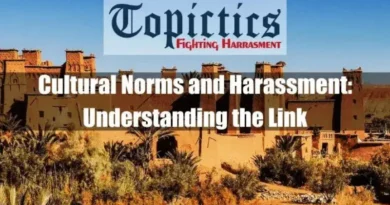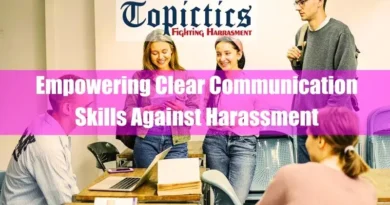I. Introduction
Picture this: Harassment in the workplace isn’t just wrong; it can seriously hurt your organization. We all know it happens, but this article breaks down the real costs for employees and the bottom line. There are no fancy definitions here, just clear talk about how any kind of bullying, from racial slurs to unfair treatment, creates a hostile environment for everyone. We’ll see how it hurts morale, productivity, and even reputations and what smart companies can do to stop it cold. Imagine a culture where everyone feels safe and respected – that’s where we’re headed!
II. The 15 Devastating Harassment Effects on the Organizations
Harassment doesn’t just hurt individuals; it can leave organizations with a nasty black eye and an empty wallet. Let’s break down the key ways harassment bites at the company level:
1. Legal Fees and Judgments:
If harassment claims land in court, organizations face hefty legal fees, settlements, and even judgments. Remember, fighting a lawsuit is expensive, even if you win.
2. Healthcare Costs:
Harassment takes a toll on employee health, increasing healthcare costs for companies. Think stress-related illnesses, sleep issues, and even depression – all adding up on the medical bills.
3. Lost Productivity and Revenue:
When employees are stressed, anxious, or disengaged due to harassment, productivity plummets, leading to lost revenue and missed opportunities, it’s like having a leaky faucet – productivity drips away, draining your profits.
4. Bad Press and Media Scrutiny:
News of harassment scandals can paint your company negatively, attracting unwanted media attention and tarnishing your brand image. Consider it a social media firestorm, except it can damage your bottom line.
5. Erosion of Consumer Trust:
Customers often choose brands they trust. But if there’s a whiff of harassment, trust fades fast, leading to lost customers and decreased loyalty. It’s like building a sandcastle – one wave of bad publicity can wash it away.
6. Talent Acquisition Woes:
Top talent seeks positive work environments. News of harassment makes recruiting difficult, leading to a talent pool drought and hindering your growth. It’s like trying to attract butterflies with pesticides – not gonna happen.
Also, read:
- Quid Pro Quo Harassment: What It Is? Know Everything
- Explaining Quid Pro Quo Harassment Under Title IX

7. Fear of Speaking Up:
When harassment chills the air, employees hesitate to speak up, share ideas, or be innovative. It’s like putting a muzzle on creativity, stifling your organization’s ability to adapt and grow.
8. Silenced Diverse Perspectives:
Harassment often targets specific groups, silencing their voices and perspectives. This leads to a monoculture of thought, hindering innovation and problem-solving. It’s like ignoring a whole orchestra section – you miss out on the richness of a full symphony.
9. Teamwork Turned Toxic:
If colleagues feel unsafe or disrespected, collaboration crumbles. Projects stall, communication suffers, and the team spirit evaporates. It’s like trying to build a tower with wobbly bricks – the whole thing comes crashing down.
Related articles:
10. High Turnover and Talent Drain:
When employees feel harassed, they head for the exits. This high turnover leads to a talent drain, taking valuable skills and experience with them. It’s like having a revolving door in your talent pool – nobody sticks around.
11. Loss of Institutional Knowledge:
Experienced employees leaving takes a chunk of your institutional knowledge with them. Training replacements take time and money, hindering your organizational memory. It’s like losing a library of valuable information.
12. Weakened Company Culture:
If harassment goes unchecked, it poisons your company culture. Building a strong, cohesive culture takes time and effort. Still, harassment can unravel it all, leaving a fragmented and dysfunctional team. It’s like trying to grow a garden on cracked pavement – nothing thrives.
Ignoring harassment isn’t just bad for business; it’s bad for people. Here’s how it harms individuals within your organization:
13. Employees Losing Focus and Motivation:
Feeling harassed is distracting, making it hard to concentrate and stay motivated. It’s like trying to work with a buzzing fly in your ear – impossible to focus.
14. More Absenteeism and Presenteeism:
Employees facing harassment take more sick leave or struggle to engage at work (presenteeism) fully. This hinders overall productivity, like team members constantly calling in sick or going through the motions.
15. Creativity Takes a Hit:
When employees feel unsafe or afraid to speak up, creativity suffers. Think of it as silencing valuable voices in a brainstorming session – you miss out on innovative ideas.
Remember, these are just the human costs. These individuals are more than just statistics – they are your team, colleagues, and human capital. Creating a safe and respectful work environment isn’t just the right thing to do; it’s essential for a thriving organization and the well-being of your people.
Related articles:
III. Real-World Scars: How Specific Harassment Types Can Cripple Organizations
A. Gender-Based Harassment at Uber
In 2017, Uber faced a reckoning after former engineer Susan Fowler published a blog post detailing her experience with sexual harassment and retaliation within the company. This ignited a firestorm, showcasing a company culture tolerating inappropriate behavior. The fallout was immense:
- Financial Cost: A $2.8 million settlement, reputational damage leading to decreased user trust and driver acquisition, and a $20 million fine from the U.S. Department of Justice.
- Organizational Turmoil: CEO Travis Kalanick resigned, leadership changes were implemented, and the company underwent significant cultural reforms to foster inclusivity and respect.
B. Racial Harassment at Tesla
Tesla has faced multiple lawsuits alleging racial harassment within its Fremont factory. Former employees described a hostile work environment with racial slurs, offensive graffiti, and discriminatory treatment. These lawsuits have the potential to lead to:
- Legal Battles: Significant financial settlements or judgments, damaging public perception, and potential regulatory scrutiny.
- Recruitment Challenges: Difficulty attracting and retaining diverse talent, hindering innovation and growth.
- Employee Morale and Productivity: Decreased job satisfaction, increased stress, and reduced productivity among affected employees.
C. Bullying and Hostile Work Environment at Reddit
In 2022, Reddit CEO Steve Huffman publicly apologized for past instances of bullying and a hostile work environment within the company. This stemmed from allegations of racist, sexist, and homophobic behavior towards employees. The consequences included:
- Employee Exodus: Resigning key executives and talent creates instability and knowledge loss.
- Public Criticism and Boycotts: Negative media coverage and calls for user boycotts impacting brand image and user trust.
- Internal Culture Shift: Implement stricter anti-harassment policies, training programs, and leadership changes to build a more inclusive culture.
These are just a few examples, highlighting the diverse forms harassment can take and its devastating impact on organizations, affecting finances, reputation, talent, and overall well-being. Remember, these are not isolated incidents; they represent a wider systemic issue demanding proactive solutions.
IV. Mitigating the Damage: Strategies for Prevention and Response
Harassment casts a dark shadow on organizations, but there’s hope. Here are key strategies to prevent and respond to it, building a workplace where everyone thrives:
A. Strong Harassment Prevention Policies and Training
- Clear Expectations: Develop detailed policies that define prohibited behaviors like sexual harassment, racial discrimination, bullying, and retaliation. Outline what constitutes a hostile work environment, leaving no room for ambiguity.
- Informed Workforce: Implement comprehensive training programs for all employees and managers. Educate them on recognizing harassment, understanding their rights and responsibilities, and bystander intervention techniques. Empower them to speak up and challenge inappropriate behavior.
B. Effective Reporting Mechanisms
- Multiple Channels: Provide diverse reporting options, including confidential hotlines, online reporting portals, and dedicated HR representatives. Foster a culture where individuals feel safe to report without fear of retaliation.
- Swift and Thorough Investigations: Establish clear procedures for prompt and impartial investigations of all reported incidents. Ensure transparency and communication with involved parties while protecting confidentiality.
C. Zero Tolerance
- Consequence for Actions: Implement a zero-tolerance approach to harassment. Have clear disciplinary actions for perpetrators, ranging from warnings to termination, based on the severity of the case. Communicate these consequences clearly to deter wrongdoing.
- Supporting Victims: Offer comprehensive support to victims throughout the process, including access to confidential counseling, legal resources, and emotional support systems. Show commitment to their well-being and safety.
D. Building a Positive and Inclusive Culture:
- Open Communication: Promote open communication channels where employees feel comfortable expressing concerns and reporting issues without fear of judgment. Encourage active listening and respectful dialogue.
- DE&I Initiatives: Implement diversity, equity, and inclusion (DE&I) initiatives that foster respect for all individuals, regardless of their background, identity, or beliefs. Celebrate diversity and create a sense of belonging for everyone.
Remember, these strategies are interconnected. Prevention is key, but a robust response system ensures accountability and protects individuals. Building a positive and inclusive culture creates a foundation for respect and understanding, preventing harassment from taking root in the first place.
By implementing these strategies, organizations can move beyond merely mitigating the damage of harassment and create a truly safe, inclusive, and thriving workplace for all. Remember, fostering a culture of respect and zero tolerance for harassment is not just the right thing to do; it’s good for business, too.
V. Conclusion: Building a Brighter Future, Free from Harassment
Harassment’s dark shadow falls not just on individuals but on organizations as a whole. The costs are undeniable, from financial losses to reputational damage, decreased productivity, and stifled innovation. But despair is not the answer. We can choose a brighter future.
Proactive prevention, effective response mechanisms, and a commitment to building a positive and inclusive culture are powerful tools. Empowering employees, holding perpetrators accountable, and fostering respect and understanding create a space where everyone thrives. Remember, a zero-tolerance approach isn’t just about avoiding legal trouble; it’s about creating a workplace where people feel safe, valued, and empowered to contribute their best.
Today, let’s commit to action. Let’s prioritize creating a safe and respectful work environment for all. Let’s break the silence, challenge inappropriate behavior, and build organizations where harassment has no place. The future of our workplaces and the well-being of our people depends on it.









